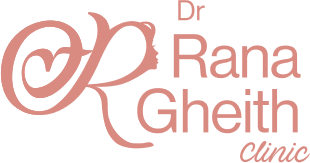PRP Hair Treatment
You may have heard about PRP (Platelet-Rich Plasma) hair treatment as a modern therapeutic procedure. In this article, learn about the benefits of PRP hair injections, how they are administered, and important tips to follow after the sessions.

What is PRP Hair Treatment?
PRP hair injections are a procedure used to stimulate and strengthen hair growth. This process involves drawing a small amount of blood from the person, processing it to separate the plasma and platelets containing growth factors that contribute to tissue regeneration and hair growth.
Benefits of PRP Hair Injections
Numerous scientific studies have indicated that using these injections helps stimulate hair growth by increasing blood flow to hair follicles and enhancing hair density, in addition to protectinghair follicles from premature shedding. PRP contains various growth factors and proteins that accelerate tissue repair. Since some types of hair loss result from follicle damage, researchers initially hypothesized that PRP injections might help regrow hair by reversing the process occurring in androgenic especial.
How PRP Hair Injections Are Administered
Here are the steps for using PRP injections for hair:
1. Blood Sample Collection: A small amount of the person’s blood is drawn.
2. Blood Processing: The doctor places the blood in a centrifuge to separate the platelet-rich plasma from the rest of the blood components.
3. Injection: The plasma is injected into the scalp areas experiencing hair thinning or loss.
How Many PRP Hair Treatment Sessions Are Needed?
Doctors’ recommendations regarding the frequency of PRP injections for hair loss treatment vary based on individual response and initial treatment results. After stabilizing the hair loss issue, the doctor may suggest maintenance injections every 3-6 months.
Side Effects of PRP Hair Injections
Using these injections may result in some common side effects on the scalp, such as:
- Pain during the injection session.
- Headache.
- Swelling.
- Itching.
- Temporary change in scalp skin color.
Warnings When Using PRP Hair Injections
You should inform your doctor about all medications and supplements you are taking, as well as any medical conditions you have, because certain conditions prohibit PRP hair treatment sessions. Several factors can increase the risk of side effects from these injections, such as:
- Some health issues like low platelet count or sepsis.
- Certain types of cancer, such as bone cancer.
- Smoking.
- Fever.
- Anemia.
Tips After PRP Hair Treatment
Here are some recommended tips after undergoing PRP hair treatment:
- Avoid washing your hair after the injection; you can wash it the day after the session.
- Avoid direct exposure to high heat for at least two days after the injection, such as sunlight and very hot water, to prevent increased scalp irritation.
- It is advisable to avoid strenuous or violent sports activities for a day or two after the session.
- Use gentle hair and scalp care products.
- Avoid using blood-thinning medications, such as anti-inflammatory drugs and aspirin, for up to two weeks after PRP treatment, as these medications may increase scalp pain and bruising.
PRP Hair Treatment at Dr. Rana Gheith’s Center
Here are some recommended tips after undergoing PRP hair treatment:
- Avoid washing your hair after the injection; you can wash it the day after the session.
- Avoid direct exposure to high heat for at least two days after the injection, such as sunlight and very hot water, to prevent increased scalp irritation.
- It is advisable to avoid strenuous or violent sports activities for a day or two after the session.
- Use gentle hair and scalp care products.
- Avoid using blood-thinning medications, such as anti-inflammatory drugs and aspirin, for up to two weeks after PRP treatment, as these medications may increase scalp pain and bruising.

Follow us